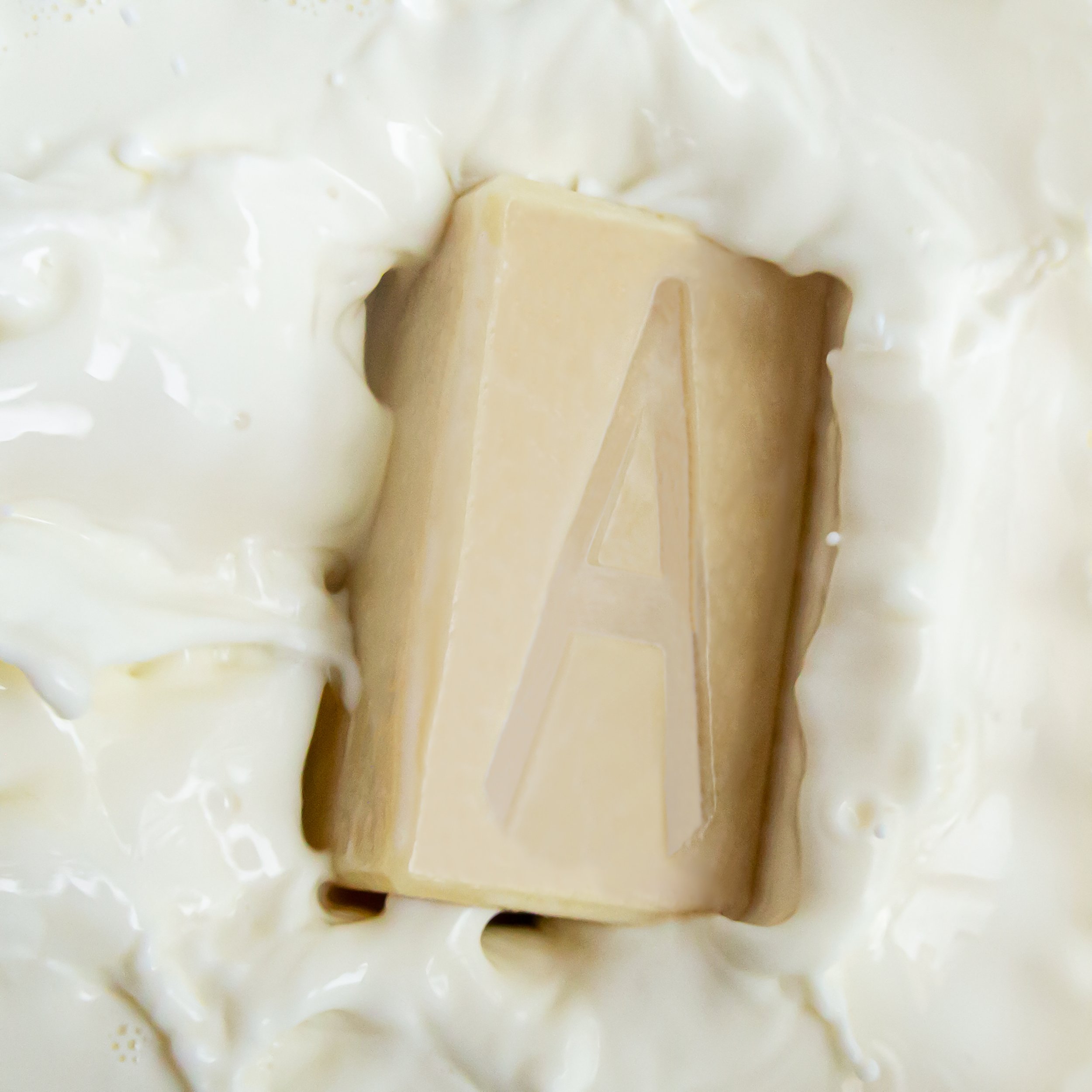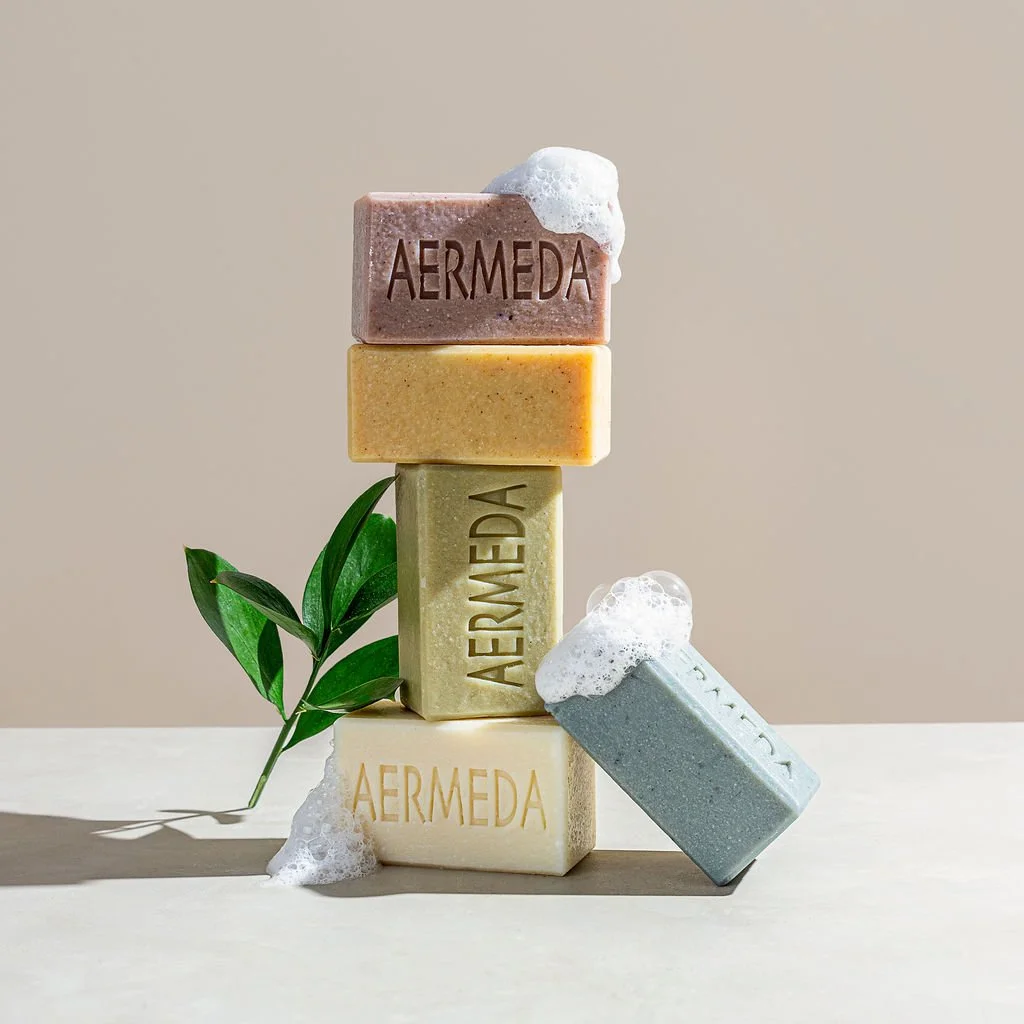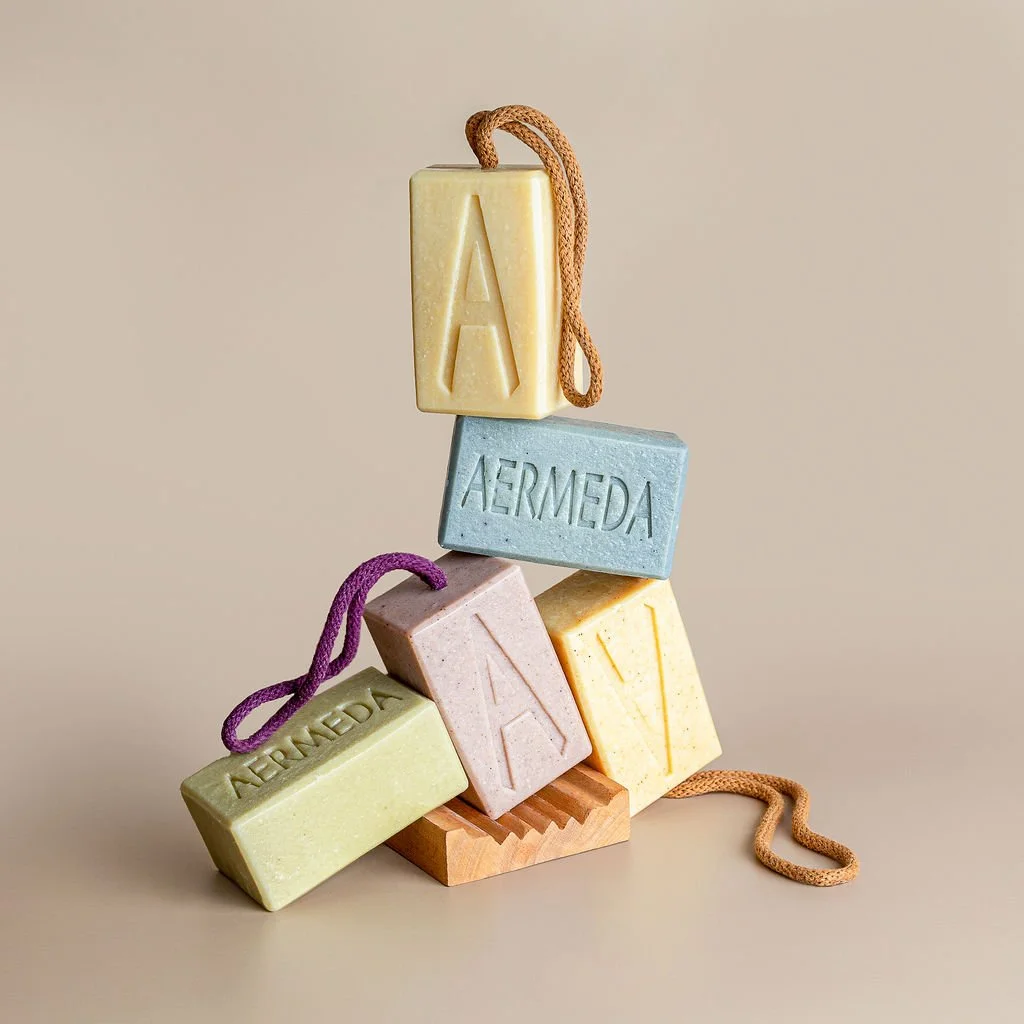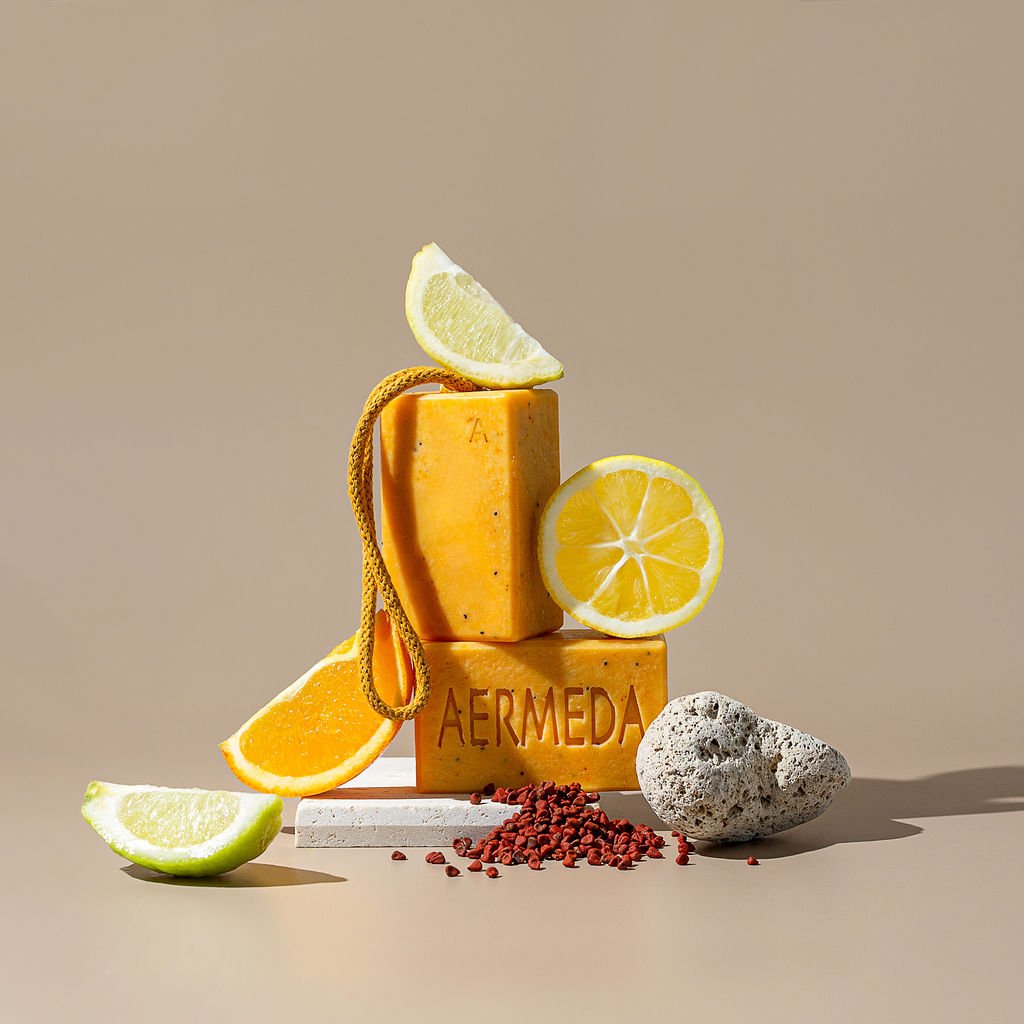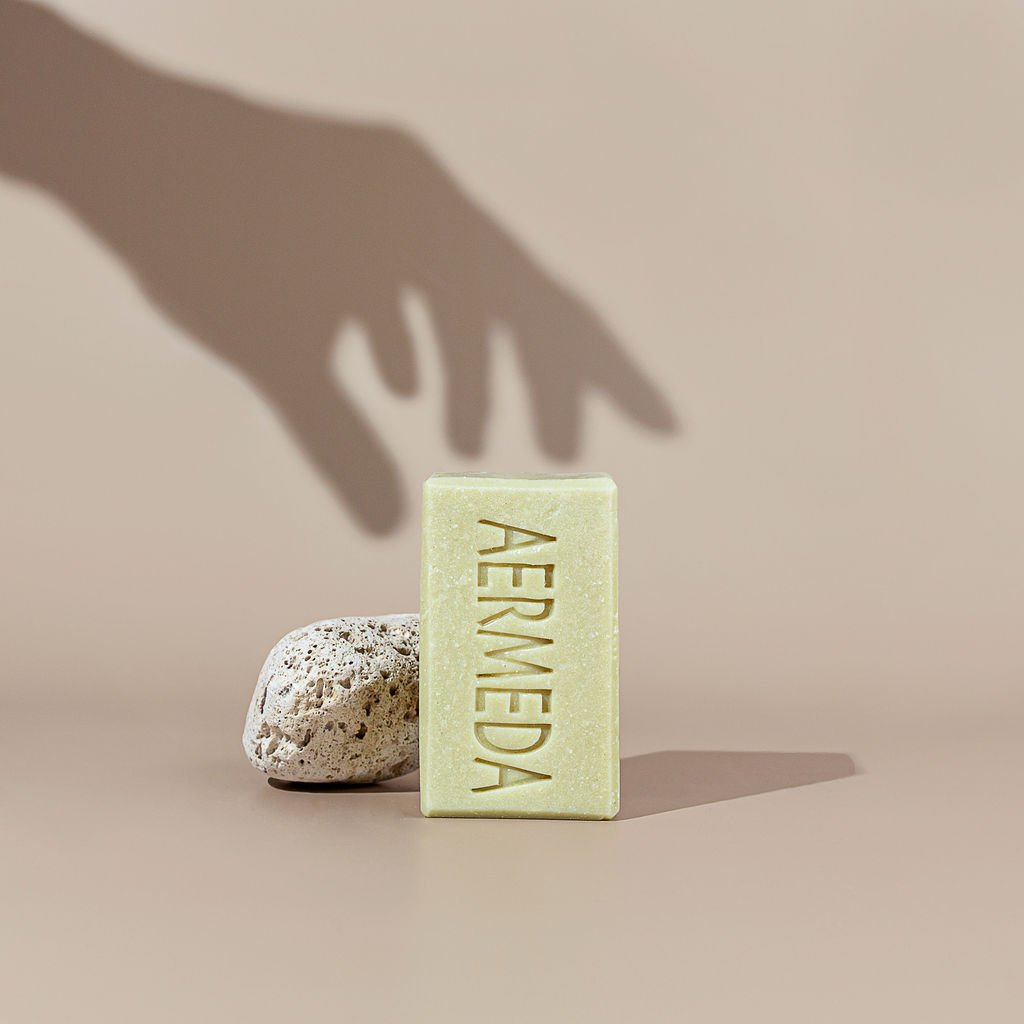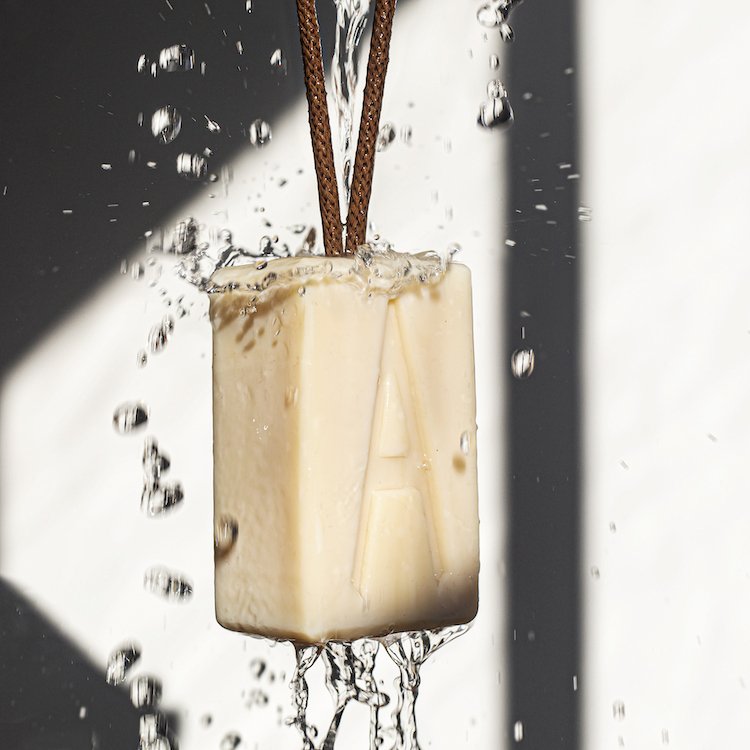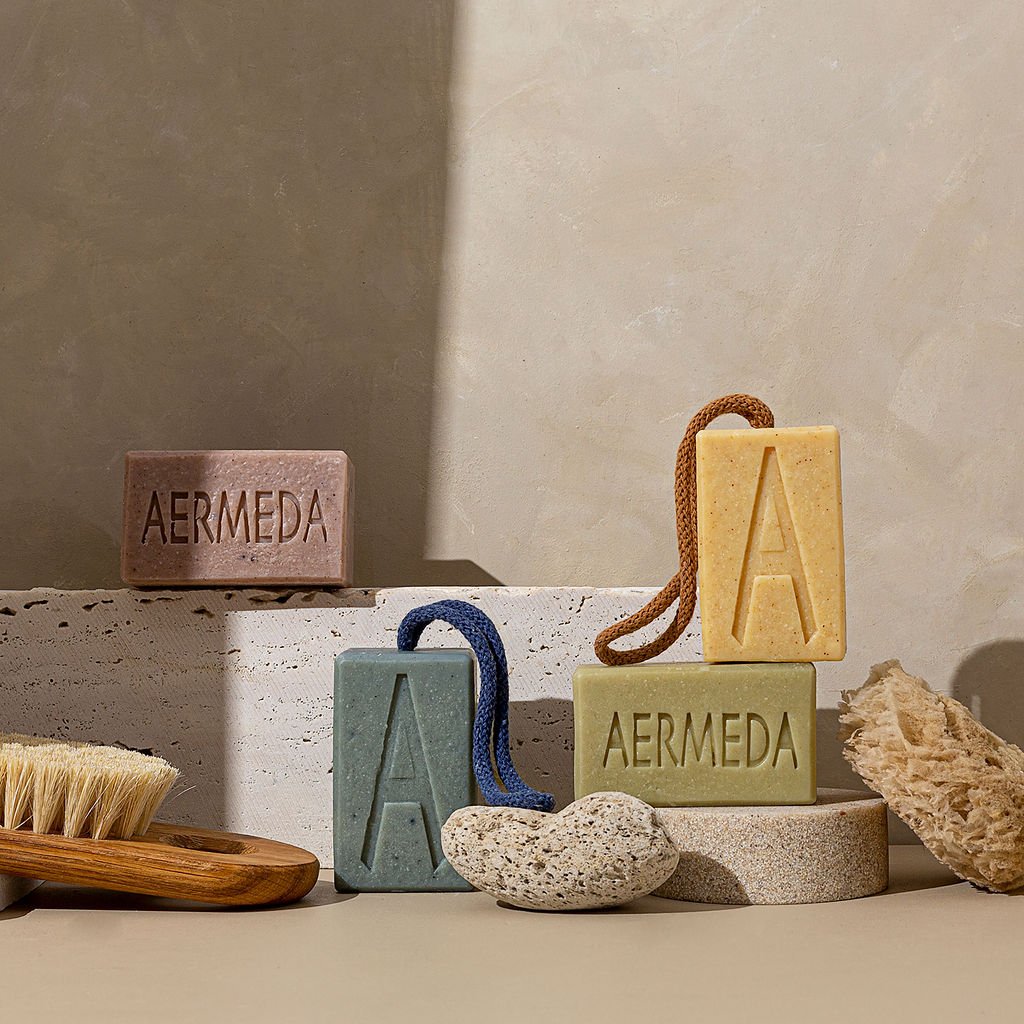Focus on milk Soap
Why Milk Soap?
Having explored many liquid ingredients and the benefits they bring to our soap; Intrigued by the benefits of milk on skin, we made the decision to only make milk soaps.
Soaps enriched with milk are creamier than those made with water, and milk’s natural fats, minerals, and other nutrients provides skin loving moisture and nourishment.
At Aermeda, we have taken the time to master the art and produce a soap that does not compromise the quality of the end result, making a soap with high moisturization properties.
What is milk soap?
Milk soap is created from a formula that replaces all, or part, of the water with milk. They are moisturising, creamy, and lather beautifully.
The milk can be whole raw, canned or even powdered.
There is no specified volume of milk required to qualify soap a ‘milk soap’. So, while an extreme example, one teaspoon (5ml) of milk would qualify a bar for the title of milk soap.
The list of dairy and non-dairy milk that can be used in soap making is long and varied – at present we offer goat, almond, coconut, rice, and butter milk - putting several of our milk soaps into the category of vegan-friendly.
The art of milk soap making is more complex than making soap with water. It is a process that cannot be hurried, one which requires time and patience.
I find it very therapeutic and with any Aermeda product you are using something that has been created with personal care.
The process is similar for all plant & dairy milks.
After hand milking, goat milk is strained and snap frozen in ice cubes immediately. Plant milk is frozen the night before.
Both animal and plant-sourced milks contain an abundance of natural sugars, and while using frozen milk doesn’t eliminate scorching when the sodium hydroxide (Lye) process takes place, it does make it easier to prevent! Yes lye is needed to make soap from scratch. Nothing can be substituted for lye in handcrafted soaps. When oil, butters, liquid, and lye are blended together it triggers a chemical reaction called saponification. When saponification is reached, you no longer have oil, butters, liquid and lye – you have soap. See FAQ about using Lye in soap making.
Experience has taught me to have the milk ‘just’ defrosting as it makes dissolving the lye easier. This process of adding lye to ‘slushy’ milk is very, very slow, it must be added in small quantities and stirred constantly. Hardly conducive to listening to heavy rock music! The goal is to keep the temperature around 37 degrees centigrade to prevent discolouration. Otherwise those sugars can burn, producing a distinct smell as well as turning the soap brown/orange, or creating a soap with brown specks.
In an effort to speed the process up, many milk soap artisans either use less than 100% milk or add powdered milk to the oils. Aermeda take pride in producing a full 100% raw milk soap without cutting it with any water while formulating our recipes.
The remaining process is similar to using water until poured into the mold. Due to all the sugars in the milk the soap batter needs to kept cool to prevent a volcano effect and decolourisation so we put in the freezer immediately over night.
Having unmolded and cut the soap, it’s time to cure. Our cure process is not hurried either and the soaps are cured in a cool room for 8 weeks before they are ready for sale.
Having explored many liquid ingredients and the benefits they bring to soap, we made the decision to only make milk soaps. Always intrigued by the benefits of milk on skin, we've taken the time to master the art and produce a soap that does not compromise the quality of the end result, making a soap with high moisturization properties.


